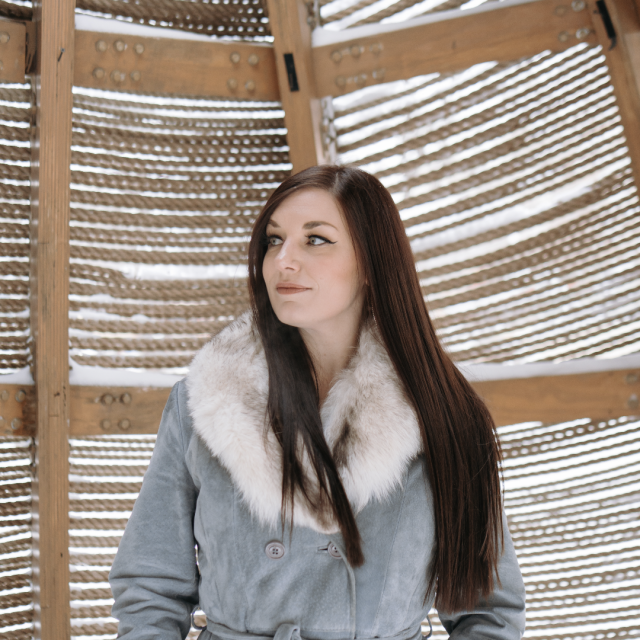Tagged: Instagram
What We Can Learn About Personal Branding From Louise Linton's Instagram Fiasco
- by Alyson Shane
I'm not often one to bring together politics and my profession, but sometimes public lessons bear repeating.
This morning I was listening to the NPR Politics Podcast (which I high recommend for all you political wonks out there) and in the final section of their show they discuss stories they "can't let go." In the segment, Congressional reporter Susan Davis mentioned a fiasco involving the U.S. Treasury Secretary and his wife, Louise Linton.
Here's the story in a nutshell:
- The original post. Louise posted a photo on her Instagram account, which was public at the time but is now private, of herself and her husband disembarking from a government airplane (the photo has also now been deleted.)
- Humblebragging. The primary reason Louise came under fire was because she included several hashtags mentioning the multiple designer label items she was wearing. Commenters felt that she was bragging about her wealth and using a government plane.
- Feeding the trolls. One commenter left a comment which read: "Glad we could pay for your little getaway #deplorable" to which Louise responded with a comment where she claimed she and her husband were "bigger patriots" than the commenter (see below).
- Going viral. As a result of Louise's reaction to the comment, the story blew up all over news networks and drew a lot of attention from the media.
- Watchdogs get involved. The story viral highlighted the couple's trip on a government airplane, which let to the watchdog group Citizens for Responsibility and Ethics in Washington (CREW) filing a FOIA to investigate whether or not the couple planned the trip using the government plane specifically to get a good view of Monday's solar eclipse.
Breaking It Down
While Louise Linton's story isn't uncommon - lots of people say/do things online which acerbate a situation, after all - it's relevant because it's a pertinent example of how a mismanaged personal brand can have far-reaching negative consequences for the individual.
Let's explore in more detail:
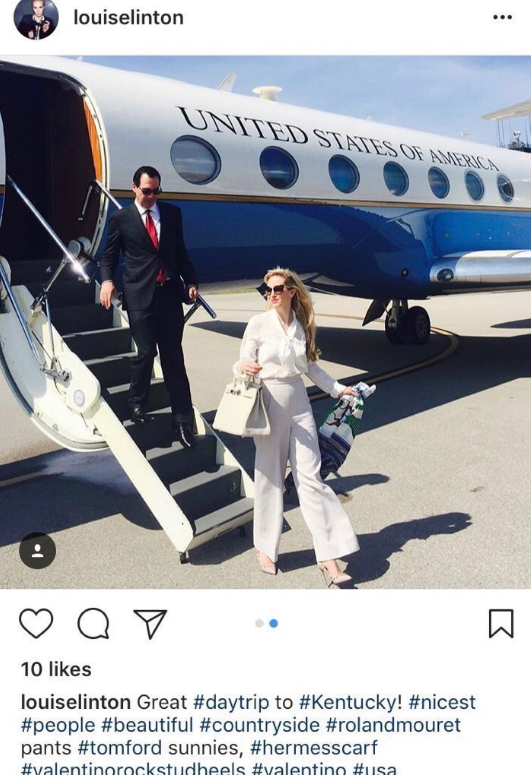
The Original Post
Let's start with the facts: Louise Linton is married to a politician, which means that she is going to come under just as much fire and scrutiny as her husband. This is normal, but we live in times which are defined by the growing gap in inequality between the 1% and the poor, especially in the United States.
As a result, someone in her position needs to be especially careful about what she shares as she builds her personal brand, and the role that information plays in a larger narrative about herself and her husband, Republicans, and wealth inequality in America.
Obviously none of these thoughts were present when she posted her photo to Instagram. Honestly, the photo itself isn't terribly troublesome; it shows the couple walking off a government plane and looks like your typical "politicians going to and from places" photo that we've seen of basically every politician at some point in time.
The problem was that she used the post as an opportunity to showcase the variety of designer items she was wearing. By deliberately including these hashtags she went out of her way to flaunt her wealth, which doesn't bode well in a time when the income gap in America is as worse as it's ever been.
As a result, some people got upset.
The Fallout
Of the many comments left on the post, this one seemed to be particularly upsetting for Louise:

She responded with a lengthy, condescending comment which included the following excerpt:
“Cute! Aw!!! Did you think this was a personal trip?! Adorable! Do you think the US govt paid for our honeymoon or personal travel?! Lololol. Have you given more to the economy than me and my husband? Either as an individual earner in taxes OR in self sacrifice to your country?”
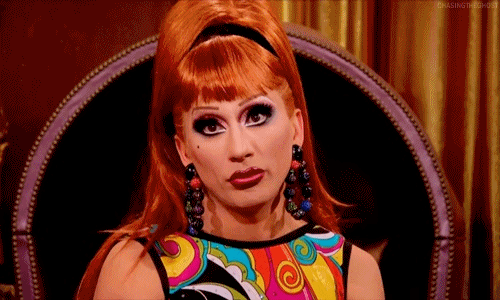
In the immortal words of Bianca DelRio: "Really, Queen?"
In addition to being incredibly condescending, Louise's comment strikes a few critical nerves here:
- She's deliberately dismissive of the commenter from the get-go.
- She flat-out denies that her trip was a personal one.*
- She insults the commenter by insinuating that she and her husband "give more" because they pay more in taxes... ostensibly because they earn more.
- She accuses the commenter of not being as patriotic as herself and her husband as a result of their tax contributions.
*(which has since turned out not to be completely true)
For someone who lives in the public eye, and who is married to a wealthy and influential politician whose effectiveness within government depends on his ability to identify with and relate to his electorate, this was about the worst possible comment she could have made.
In addition to breaking the number one rule of the internet (don't feed the trolls), her comment aggravated the situation because it clearly demonstrated that she thinks she doesn't see herself as someone who can relate to, or is even on the same playing field as, the people commenting on her photo. And this is probably true: if she can afford a Hermez scarf, Tom Ford sunglasses, and Valentino heels (among others) then she's clearly in a significantly different place than many of her followers.
However: that doesn't make it appropriate to point it out, especially in the way she did.
Coming Under Fire
The most fascinating aspect of this story was that her Instagram fight went viral, and wound up attracting the attention of the CREW watchdog group.
Now, because Louise didn't properly manage her personal brand, she and her husband are coming under fire for potentially using government aircraft for a personal excursion and are the subject of increased scrutiny and media coverage.
We often hear the expression There's no such thing as bad publicity, but in this case I'd be willing to bet that Louise wishes she'd never posted the photo at all. Primarily because she's since deleted the image and made her account Private.
Why Is Her Situation Different?
We live in the age of the Instagram influencers, and there are thousands (maybe more) of users who have built up followings, established relationships with brands, and build personal media empires based on using hashtags to establish influence and get in front of major retailers, agents, brand managers, and the like.
One could argue that, as a small-time actress, Louise was just trying to get in front of the brands she'd like to work with, and I'm inclined to agree that that's probably exactly what she was doing.
So what makes Louise's situation different? Simple: she's married to a politician.
This fact shifts the perception of her personal brand away from "small-time actor and budding influencer" to "politician's wife flaunting their wealth." It means that what she says and does is much more likely to come under fire, which means she needs to be extra-mindful of how she presents herself and her lifestyle online.
When building our personal brands we need to be mindful of the ways in which others will perceive what we post, say, and do. Of course, we can't please everyone all the time, but part of developing a strong personal brand is identifying our positive strengths, showcasing our passions, and doing our best to be a supportive and inclusive member of whichever communities we're a part of.
Louise Linton's Instagram post did none of those things, and by engaging in a comment fight she further undermined any credibility she may have had by demonstrating that she saw herself as being on a pedestal compared to the average American.
What Can We Learn?
Louise Linton's Instagram fiasco can be summed up in a few key points which should be seared into the minds of anyone attempting to build a personal brand:
- Like Kendrick Lamar says: Be humble. Part of building an effective personal brand is telling a story of growth and progress, so sharing success stories, collaborations, unique opportunities and experiences, and the like is often part of that process. But going out of your way to publicly flaunt your wealth is never cool or relatable; in fact, it's usually the opposite.
- Think before you post. We're all guilty of posting dumb stuff from time to time, but the larger our personal brands become, the more we need to think critically about what we say and do, and how it may make others feel.
- Ask yourself: who will connect with this content? Louise Linton is a politician's wife, which means the majority of the people who engage with her content are either people who like or dislike her husband and what he represents to them. Even if Louise's primary goal with her content was to get in front of designer brands and high-end influencers, she should have been more aware that the majority of people paying attention to what she's doing are people who can't afford to wear multiple designer pieces to take a ride on an airplane, which is going to garner more negative feedback than positive.
- Don't feed the trolls. Just don't do it.
- If you *absolutely have to comment back*, again: be humble. Apologize. Play nice and be civil. We win more friends with honey than with vinegar, after all, and if Louise had just apologized or been more demure in her response the public fallout, media coverage, and subsequent CREW involvement may never have happened.
At the end of the day, building a strong personal brand doesn't happen overnight, and it takes concerted effort to continue to build momentum and share content which resonates with your audience and projects the best version of yourself forward.
There are lots of ways you can connect with your target audience, get in front of brands and labels, and establish yourself as an influencer in your niche.
Just try not to take the Louise Linton approach when you do.
Do you have any personal branding horror stories, or suggestions for what Louise could have done instead? Tweet at me or tell me in the comments!
Write Better Instagram Captions in 5 Minutes or Less
- by Alyson Shane
Instagram is a visual social network by design, which means it's essential to focus on creating and finding eye-catching visuals to help your account stand out from the crowd... but what about the captions?
Many people don't realize this, but captions are one of the best tools at your disposal to help convey your message. Taking the time to write engaging, personal captions which express who you are (business or personal) and your reason for posting can go a long way towards helping keep your Followers engaged.
Luckily, sprucing up your Instagram caption game is as easy as can be! Let's take a quick look at how you can write a better Instagram caption in five minutes or less:
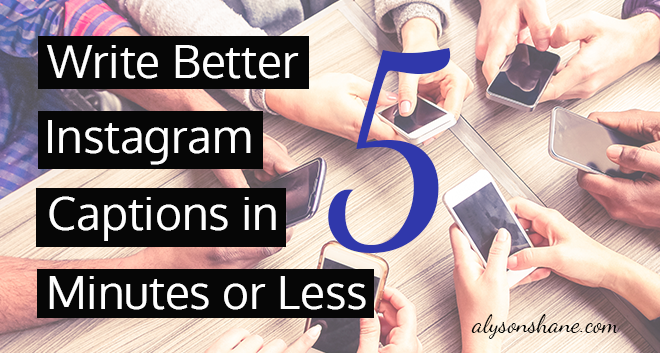
Use Your Instagram Captions to Sound Authentic
Before posting anything on Instagram, ask yourself: why should my Followers care about what I'm sharing? What sets my post apart from other, similar, content on this social network?
Some other things to ask when crafting your Instagram caption are:
- Does it tell a story?
- Does it help my Followers learn more about me?
- Does it sound personal and authentic?
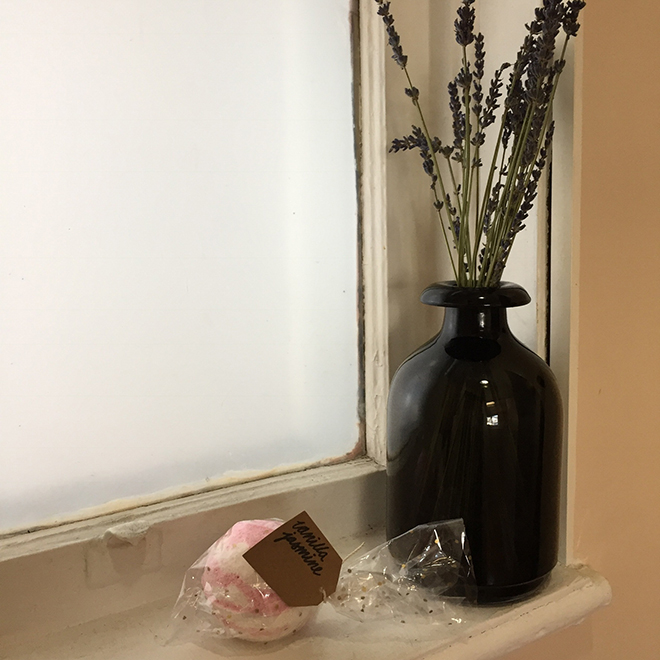
Let's use this photo of some lovely items I picked up from one of my favourite local shops, Public General Store to illustrate an example of what I mean.
Which of these two captions inspires you to take action?
Got some new stuff from @shop_public today. Check them out!
vs.
Yesterday I braved the cold to pick up some treats from my favourite new local shop, @shop_public. The dried lavender makes the house smell amazing, and I can't wait to relax with this vegan, handmade bath bomb from @blackflorawpg after a good skate. Make sure to check them out the next time you're in #WestBroadway!
See what I mean? Now my Followers know where I got the items, the reasons why I like them (local, handmade, vegan, etc), and have a personal recommendation to go check them out for themselves.
How does this example apply to my business? I hear you asking. Here's how:
Consumers demand more authenticity and personality from the brands and businesses that they interact with, the more "human" they want those interactions to feel. By using longer sentences and slang in the caption above it sounds more like... well, me.
I'm a person, and that's how I speak, so it makes sense that a brand wishing to emulate a "human" style would want to adopt a similar tone.
Use Your Instagram Captions to Tell a Story
Gone are the days when a brand could throw up an image and assume that consumers would buy based on the image, alone. Buyers in our modern economy are interested in how products and brands make them feel, and there's nothing that makes people feel good like being part of a story.
With this in mind, ask yourself: how can I wrap my products and posts in a story that will interest my Followers?
(Don't worry: if you're stuck here are a few suggestions to get the wheels in your head turning):
- Share a story about something that happened recently
- Mention specific customers, employees in your caption
- Get personal - share a success or struggle which relates to your image
- Share your favourites (places, people, food, products, etc)
- Talk about upcoming plans, dreams, and events
- Quote books, speakers, or people who inspire you and helped shape your brand
Use Your Instagram Captions As a Call-to-Action
Now that you've hooked your Followers with an interesting, authentic caption it's time to guide them to what you want them to do next. 70% of small businesses don't use a call-to-action in their marketing copy, which means doing so can give you a competitive advantage.
Stumped for a few effective call-to-action examples? I've got you covered:
- Check out the link in our profile for details
- Looking for more decor inspiration? Check out the link in our bio
- Tag a friend who...
- Share your experience/memory with us by tagging us in your photo!
- Leave a comment and tell us what you think
Encouraging your Followers to talk to you, share their stories, and get your brand involved will help with those feelings of engagement and participation in your brand's "story". Not sure how to tell your brand's story? Here's a comprehensive how-to on marketing your brand through storytelling.
Do you have any favourite tips on Instagram caption etiquette? Tweet at me or tell me in the comments!
The Power of the Hashtag
- by Alyson Shane
In the last few years the use of the "hashtag" (the # symbol - previously called the 'Pound Sign' if you're a fossil like me and used a push-tone phone growing up) has exploded in popularity. Unless you live under a rock you've likely been bombarded with the hashtag symbol everywhere - on commercials, billboards, on social media, on clothes... these days the "hashtag" is one of the most pervasive and powerful symbols of our digital age.
Despite seeing hashtags everywhere, most people don't understand their importance or how to harness their power to help them convey their message across social media platforms. A simple hashtag can improve your reach, drive brand recognition, and easily engage in large-scale conversations online.

#Why?
If you're a business owner or someone hoping to expand their social media influence, a hashtag should be an important part of your social media strategy. This is because a fitting hashtag can help drive brand recognition, drive customer loyalty, and help spread the word about your idea or product.
A hashtag instantly connects a social media post to a group of others about the same topic, and connects the person sharing it (you) with other people talking about the same topic in real-time.
What this means is that you can include a simple hashtag in your social media post and immediately have it seen by anyone else looking for that hashtag. Here's an example using Twitter:
Above is a tweet that I just created which includes the #SocialMedia hashtag. When I tweet something that includes a hashtag, the hashtag works like a link which allows people to click on it and find other tweets relating to the same subject.
When I click through on the # link Twitter takes me to a page filled with other tweets which include a "#SocialMedia" tag. The "live" feed (people using it in real-time) looks like this:
As we can see, my #SocialMedia hashtag allows me to connect with other people who are tweeting about the same subject, and for others to find my tweet as well. Twitter also offers search options to refine what you want to see from that topic.
Hashtags first started to become commonplace on Twitter as a way to link ideas and conversations in the way that I just described, but other social platforms like Facebook and Instagram have also adopted using them as well.
#How
Even if you know why a hashtag is important, it isn't going to do you much good if you don't know how to use it effectively. In fact, when misused you can actually drive people away from your message because too many hashtags feels spammy (more on that in a second.)
Here's are some ground rules for making sure you're using hashtags to their full usefulness:
- Use the hashtag (#) before relevant words or phrases to categorize posts and help them show up in a search (like in my previous example).
- A hashtag can be included anywhere in the message - they don't have to be stuck at the beginning or at the end if you can work them into the body of your message.
- A hashtag won't appear in a search if your profiles are protected or private.
#Etiquette
Don't #spam #with #hashtags.
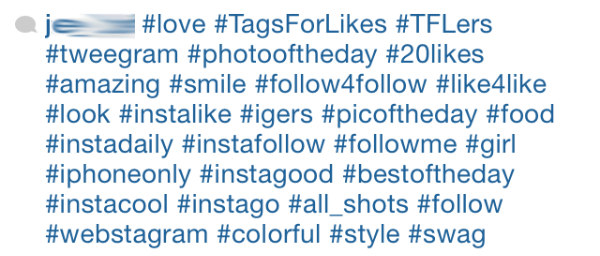
(via Google. I have no idea who this poor soul is)
Don't over-tag a single post. Twitter's best practices recommend no more than two per tweet, and in addition to being visually unappealing it also dilutes your message. Using too many hashtags dilutes the meaning of your message because you're trying to appeal to too many ideas at once.
An exception to this rule is Instagram, in which photos with at least eleven (yeah, 11!) hashtags get the most interaction. This is because Instagram doesn't have a character limit for captions on their photos, and because hashtags are the easiest way for its communities to connect with one another
The trick do doing this effectively, however, isn't to include a million hashtags in your original photo post, but rather to include a comment with your wall of hashtags afterward. This ensures that if you're sharing your photo on other social platforms the people seeing it there aren't bombarded with a dozen messy-looking hashtags. That way you're still able to connect with your Insta-communities, but are also saving some face on any other social networks your photos might be sharing to.
What can you do?
Pick a specific hashtag. If you want to start using hashtags to raise awareness for your product, brand or project, pick a specific hashtag and use it exclusively, or with one other hashtag in the body of your post. Make it unique, relevant to what you're talking about and easy to remember.
Start a Twitter Chat. If you're active on Twitter, another great option is to start Twitter chats using a hashtag specific to the theme you want to discuss. These chats operate like live Q&A's on Twitter which are organized around a specific hashtag. For instance, I participate in a Twitter conversation with other Canadian bloggers every week called #blogchatca - the hashtag is easy to include and remember, and allows me to find other people participating in the conversation and respond to them. By including the hashtag #blogchatca I know we're all participating in the same conversation.
Pick something obvious. Make sure that your hashtag is short, easy to remember, and (if possible) unique to whatever you're discussing. For example, this past weekend I participated in a game jam where the official hashtag was #GameJam. This is great because it's easy to remember and find, but it's a pretty widely-used hashtag because many game jams happen at the same time. As a result, many people tweeting about the game jam I attended started using #PegJam to indicate that they were at a game jam in (you guessed it) Winnipeg. This way everyone could find each other easily and see what others were sharing and discussing.
Do you have any tips on hashtag use? Anything you'd avoid doing? I'd love to hear your thoughts!
The Issue with Instagram
- by Alyson Shane

Instagram has a problem with it's sharing settings that the developers seem unwilling to fix, and could be considered a security issue.
Some backstory: I manage a few social media accounts in addition to my own personal account, one of which is a client's Instagram account.
If any of you manage multiple Instagram accounts then you know that the app isn't designed with this use in mind: in order to switch between multiple accounts you have to sign out of one and sign in to the other each time you want to switch, which is a huge hassle.
But this post isn't about what a pain it is to switch accounts, it's about a more glaring and potentially embarrassing issue.
When I switch between accounts, Instagram keeps the linked Facebook and Twitter accounts from the previous login. What that means is that when I post something to my Instagram feed it gets shared to my client's account instead, even though I'm completely logged out of that account.
This has gone both ways: I've had their account post to my social feeds, and vice-versa and nothing I do is fixing this issue.
I've tried resetting the linked accounts multiple times on both profiles.
I've tried writing to Instagram (twice now) with no response or bug fix.
I've posted about it on /r/Instagram asking for help/advice with no luck. Nobody seems willing to acknowledge or fix it.
This is a huge issue with their security settings. What this means is that once you’ve logged in with one account, if you or someone else using your phone later logs into their own account, they can effectively post on your behalf to your Facebook and Twitter, without you knowing and bypassing any account protection.
I love using Instagram, and it's my most heavily-used photo-sharing app. The added bonus of an additional community to engage with is great, and the ability to cross-post across multiple accounts is a huge time-saver.
However, the fact that there has been an ongoing security issue that hasn't been resolved really worries me, and it makes me wonder how many other people out there are experiencing a similar issue.
I'm at the point, now, where I've notified my clients that I won't be using their Instagram account for the foreseeable future, and am considering simply moving to another photo-sharing platform like Tumblr instead, so this may not even be something that I have to worry about for much longer.
But if you use more than one Instagram account for anything, I'd double-check those linked account settings if I were you.
